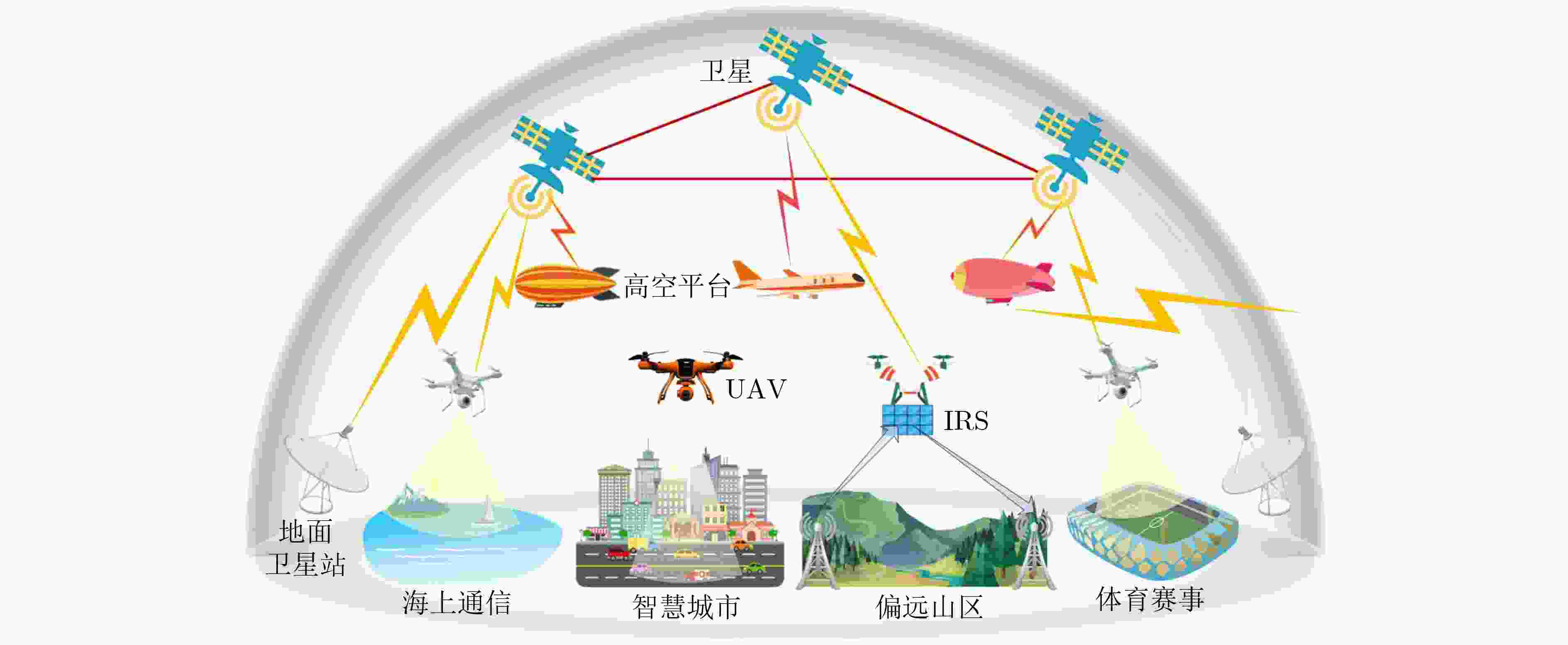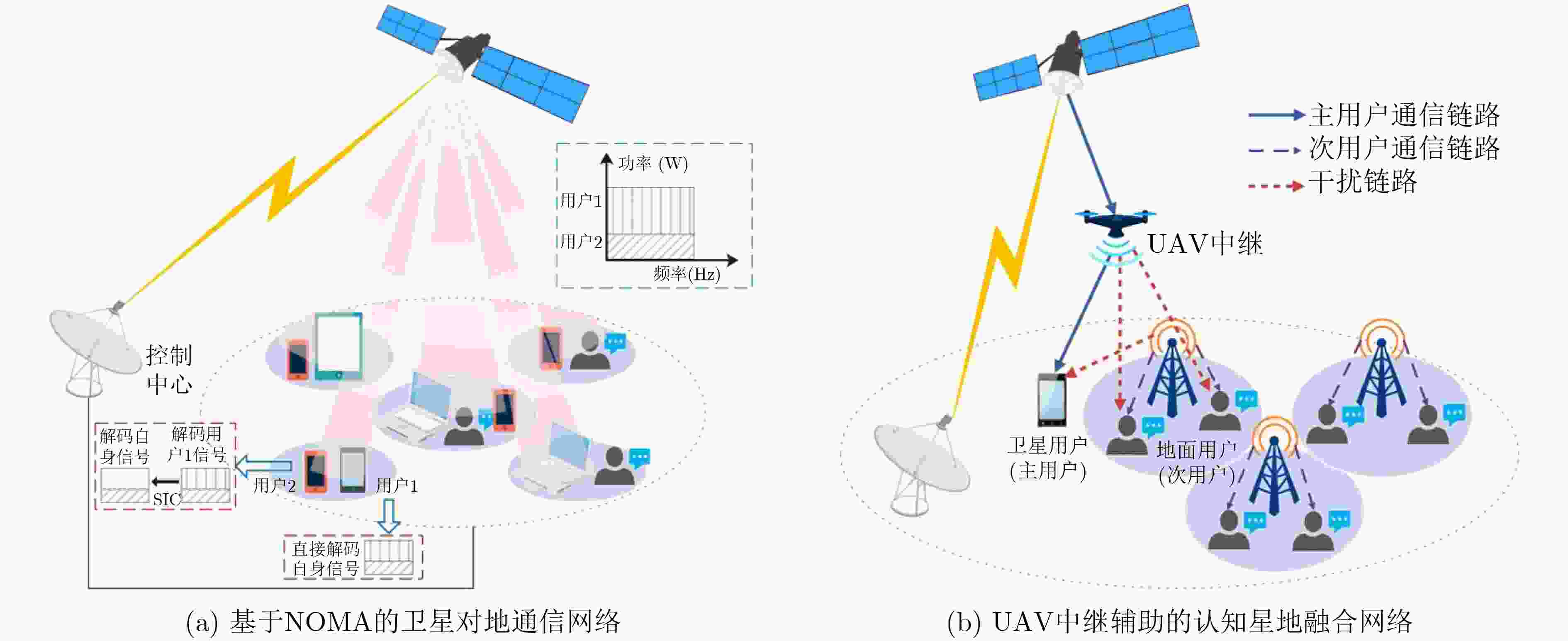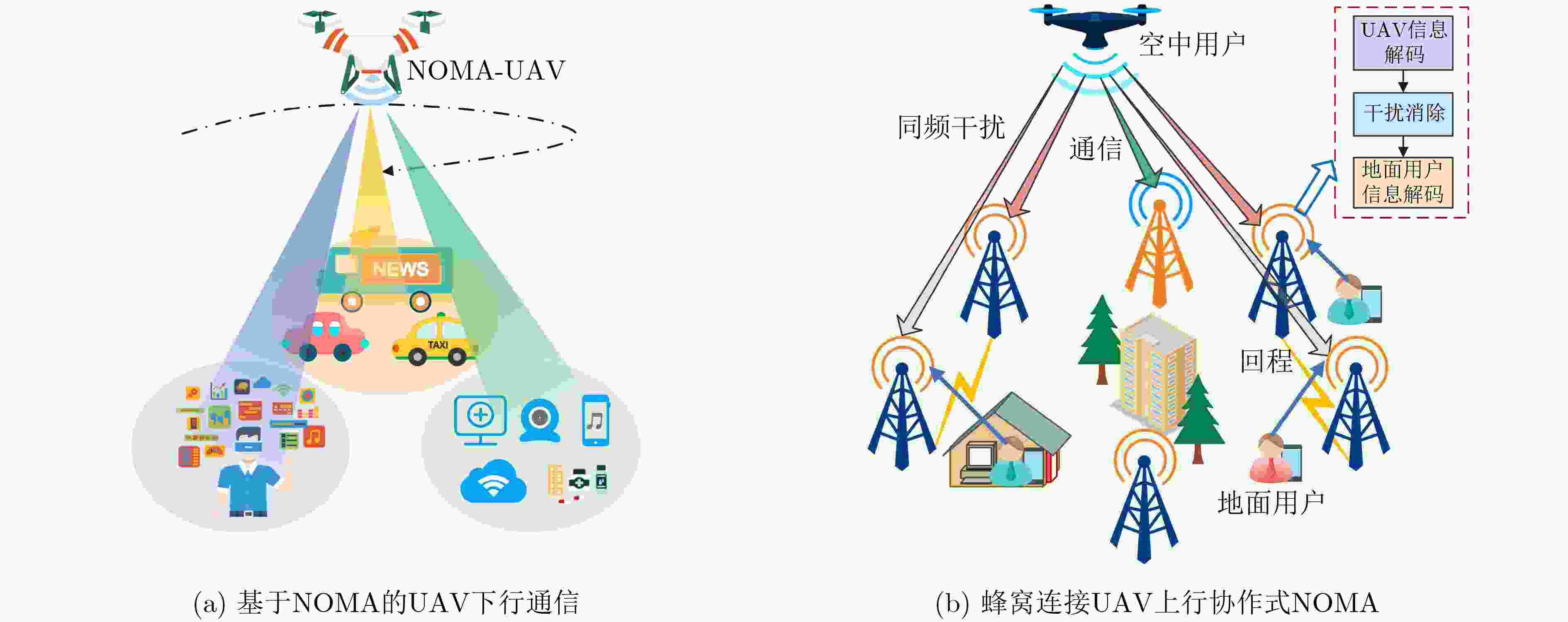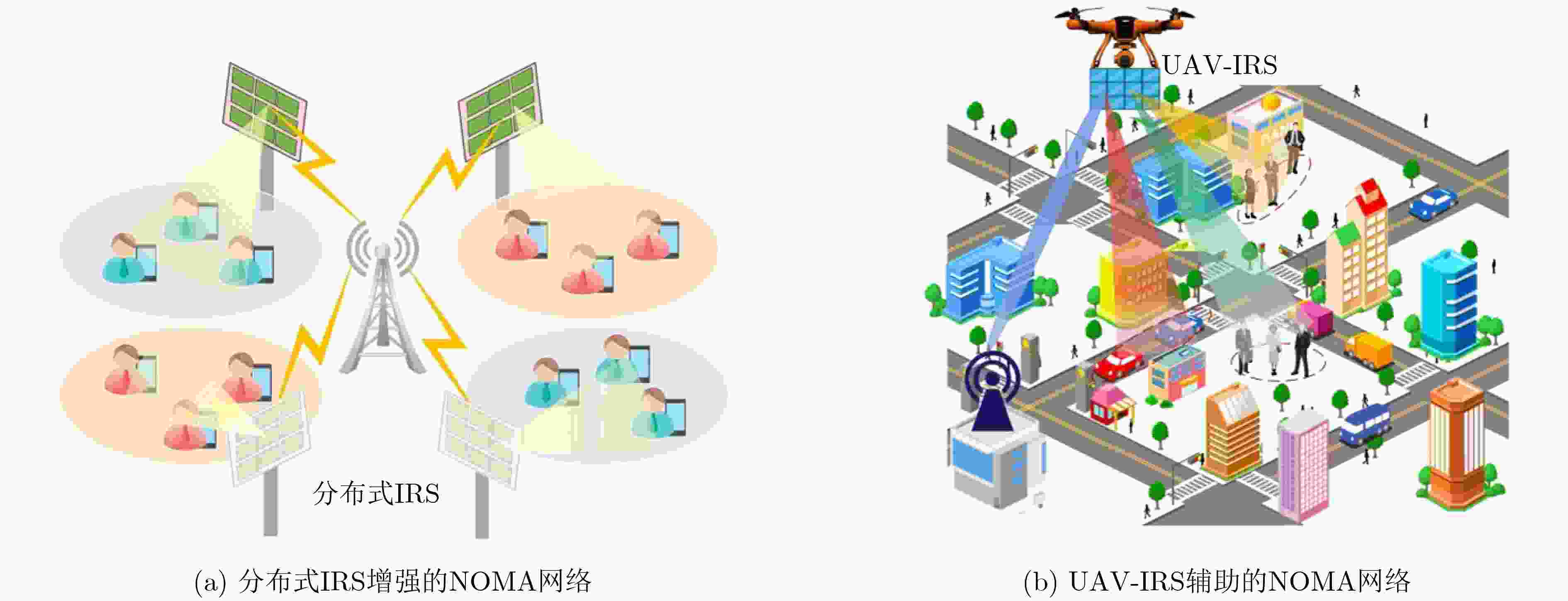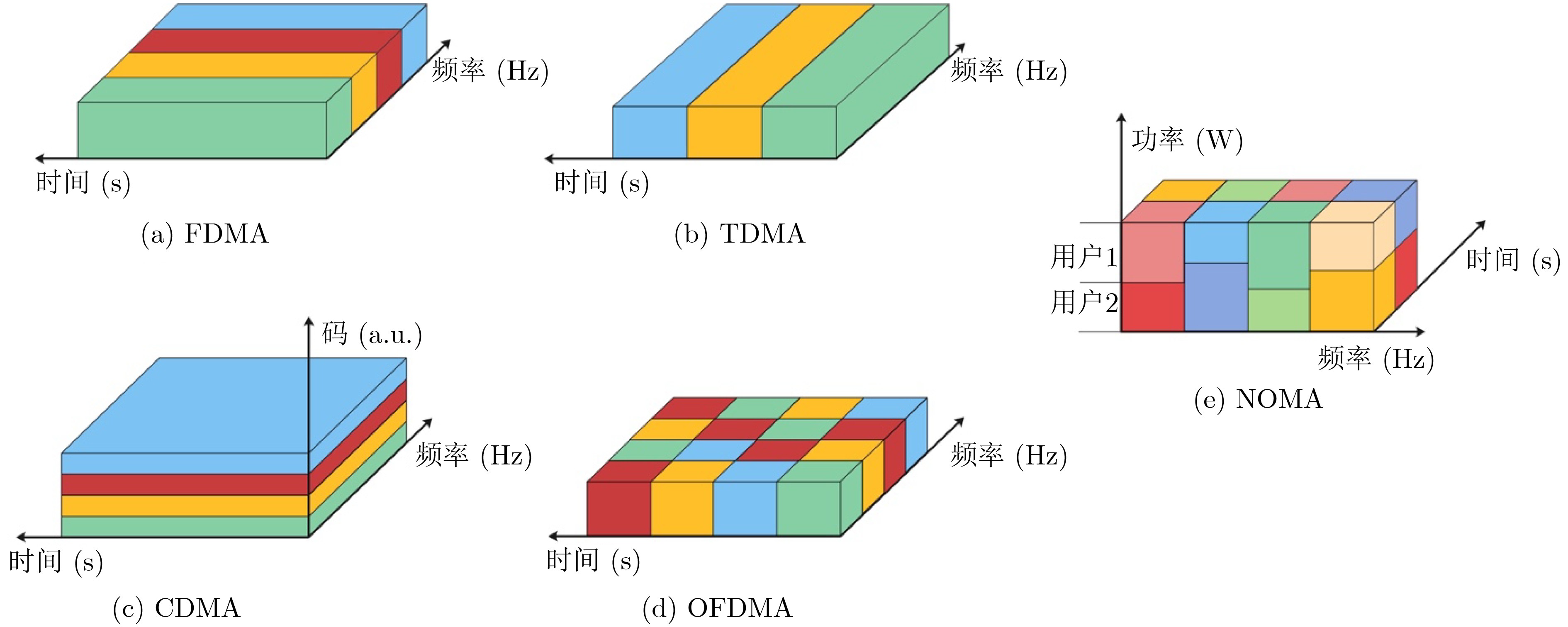| [1] |
邓伟, 郝悦, 胡南, 等. 5G网络演进与6G展望[J]. 信息通信技术, 2021, 15(5): 8–14. doi: 10.3969/j.issn.1674-1285.2021.05.002DENG Wei, HAO Yue, HU Nan, et al. 5G network evolution and 6G prospect[J]. Information and Communications Technologies, 2021, 15(5): 8–14. doi: 10.3969/j.issn.1674-1285.2021.05.002
|
| [2] |
张平, 牛凯, 田辉, 等. 6G移动通信技术展望[J]. 通信学报, 2019, 40(1): 141–148. doi: 10.11959/j.issn.1000-436x.2019022ZHANG Ping, NIU Kai, TIAN Hui, et al. Technology prospect of 6G mobile communications[J]. Journal on Communications, 2019, 40(1): 141–148. doi: 10.11959/j.issn.1000-436x.2019022
|
| [3] |
赛迪智库无线管理研究所. 6G概念及愿景白皮书[N]. 中国计算机报, 2020-05-11(008).
|
| [4] |
YOU Xiaohu, WANG Chengxiang, HUANG Jie, et al. Towards 6G wireless communication networks: Vision, enabling technologies, and new paradigm shifts[J]. Science China Information Sciences, 2021, 64(1): 110301. doi: 10.1007/s11432-020-2955-6
|
| [5] |
GUAN Yueshi, WANG Yijie, BIAN Qing, et al. High-efficiency self-driven circuit with parallel branch for high frequency converters[J]. IEEE Transactions on Power Electronics, 2018, 33(2): 926–931. doi: 10.1109/TPEL.2017.2724545
|
| [6] |
赵亚军, 郁光辉, 徐汉青. 6G移动通信网络: 愿景、挑战与关键技术[J]. 中国科学:信息科学, 2019, 49(8): 963–987. doi: 10.1360/N112019-00033ZHAO Yajun, YU Guanghui, and XU Hanqing. 6G mobile communication networks: Vision, challenges, and key technologies[J]. Scientia Sinica Informationis, 2019, 49(8): 963–987. doi: 10.1360/N112019-00033
|
| [7] |
施建锋, 杨照辉, 黄诺, 等. 面向6G的用户为中心网络研究综述[J]. 电子与信息学报, 2023, 45(5): 1873–1887. doi: 10.11999/JEIT220242SHI Jianfeng, YANG Zhaohui, HUANG Nuo, et al. A survey on user-centric networks for 6G[J]. Journal of Electronics & Information Technology, 2023, 45(5): 1873–1887. doi: 10.11999/JEIT220242
|
| [8] |
张海君, 陈安琪, 李亚博, 等. 6G移动网络关键技术[J]. 通信学报, 2022, 43(7): 189–202. doi: 10.11959/j.issn.1000-436x.2022140ZHANG Haijun, CHEN Anqi, LI Yabo, et al. Key technologies of 6G mobile network[J]. Journal on Communications, 2022, 43(7): 189–202. doi: 10.11959/j.issn.1000-436x.2022140
|
| [9] |
毕奇, 梁林, 杨姗, 等. 面向5G的非正交多址接入技术[J]. 电信科学, 2015, 31(5): 14–21. doi: 10.11959/j.issn.1000-0801.2015137BI Qi, LIANG Lin, YANG Shan, et al. Non-orthogonal multiple access technology for 5G systems[J]. Telecommunications Science, 2015, 31(5): 14–21. doi: 10.11959/j.issn.1000-0801.2015137
|
| [10] |
董园园, 巩彩红, 李华, 等. 面向6G的非正交多址接入关键技术[J]. 移动通信, 2020, 44(6): 57–62,69. doi: 10.3969/j.issn.1006-1010.2020.06.009DONG Yuanyuan, GONG Caihong, LI Hua, et al. The key technologies of non-orthogonal multiple access for 6G systems[J]. Mobile Communications, 2020, 44(6): 57–62,69. doi: 10.3969/j.issn.1006-1010.2020.06.009
|
| [11] |
DING Zhiguo, ADACHI F, and POOR H V. The application of MIMO to non-orthogonal multiple access[J]. IEEE Transactions on Wireless Communications, 2016, 15(1): 537–552. doi: 10.1109/TWC.2015.2475746
|
| [12] |
FANG Xinran, FENG Wei, WEI Te, et al. 5G embraces satellites for 6G ubiquitous IoT: Basic models for integrated satellite terrestrial networks[J]. IEEE Internet of Things Journal, 2021, 8(18): 14399–14417. doi: 10.1109/JIOT.2021.3068596
|
| [13] |
张平, 张建华, 戚琦, 等. Ubiquitous-X: 构建未来6G网络[J]. 中国科学:信息科学, 2020, 50(6): 913–930. doi: 10.1360/SSI-2020-0068ZHANG Ping, ZHANG Jianhua, QI Qi, et al. Ubiquitous-X: Constructing the future 6G networks[J]. Scientia Sinica Informationis, 2020, 50(6): 913–930. doi: 10.1360/SSI-2020-0068
|
| [14] |
ZHAO Yue, XIE Lei, CHEN Huifang, et al. Ergodic channel capacity analysis of downlink in the hybrid satellite-terrestrial cooperative system[J]. Wireless Personal Communications, 2017, 96(3): 3799–3815. doi: 10.1007/s11277-017-4207-2
|
| [15] |
陈新颖, 盛敏, 李博, 等. 面向6G的无人机通信综述[J]. 电子与信息学报, 2022, 44(3): 781–789. doi: 10.11999/JEIT210789CHEN Xinying, SHENG Min, LI Bo, et al. Survey on unmanned aerial vehicle communications for 6G[J]. Journal of Electronics & Information Technology, 2022, 44(3): 781–789. doi: 10.11999/JEIT210789
|
| [16] |
WU Qingqing and ZHANG Rui. Towards smart and reconfigurable environment: Intelligent reflecting surface aided wireless network[J]. IEEE Communications Magazine, 2020, 58(1): 106–112. doi: 10.1109/mcom.001.1900107
|
| [17] |
WONG C Y, CHENG R S, LATAIEF K B, et al. Multiuser OFDM with adaptive subcarrier, bit, and power allocation[J]. IEEE Journal on Selected Areas in Communications, 1999, 17(10): 1747–1758. doi: 10.1109/49.793310
|
| [18] |
STEELE R and HANZO L. Mobile Radio Communications: Second and Third Generation Cellular and WATM Systems[M]. 2nd ed. New York: Wiley, 1999.
|
| [19] |
GILHOUSEN K S, JACOBS I M, PADOVANI R, et al. On the capacity of a cellular CDMA system[J]. IEEE Transactions on Vehicular Technology, 1991, 40(2): 303–312. doi: 10.1109/25.289411
|
| [20] |
LI Junyi, WU Xinzhou, and LAROIA R. OFDMA Mobile Broadband Communications: A Systems Approach[M]. Cambridge, UK: Cambridge University Press, 2013.
|
| [21] |
DING Zhiguo, LEI Xianfu, KARAGIANNIDIS G K, et al. A survey on non-orthogonal multiple access for 5G networks: Research challenges and future trends[J]. IEEE Journal on Selected Areas in Communications, 2017, 35(10): 2181–2195. doi: 10.1109/JSAC.2017.2725519
|
| [22] |
YU Wei, RHEE W, BOYD S, et al. Iterative water-filling for Gaussian vector multiple access channels[C]. 2001 IEEE International Symposium on Information Theory, Washington, USA, 2001: 322.
|
| [23] |
DAI Linglong, WANG Bichai, DING Zhiguo, et al. A survey of non-orthogonal multiple access for 5G[J]. IEEE Communications Surveys & Tutorials, 2018, 20(3): 2294–2323. doi: 10.1109/COMST.2018.2835558
|
| [24] |
HOSHYAR R, WATHAN F P, and TAFAZOLLI R. Novel low-density signature for synchronous CDMA systems over AWGN channel[J]. IEEE Transactions on Signal Processing, 2008, 56(4): 1616–1626. doi: 10.1109/TSP.2007.909320
|
| [25] |
ZHANG Jiankang, CHEN Sheng, MU Xiaomin, et al. Evolutionary-algorithm-assisted joint channel estimation and turbo multiuser detection/decoding for OFDM/SDMA[J]. IEEE Transactions on Vehicular Technology, 2014, 63(3): 1204–1222. doi: 10.1109/TVT.2013.2283069
|
| [26] |
CLERCKX B, JOUDEH H, HAO Chenxi, et al. Rate splitting for MIMO wireless networks: A promising PHY-layer strategy for LTE evolution[J]. IEEE Communications Magazine, 2016, 54(5): 98–105. doi: 10.1109/mcom.2016.7470942
|
| [27] |
CLERCKX B, MAO Yijie, SCHOBER R, et al. Rate-splitting unifying SDMA, OMA, NOMA, and multicasting in MISO broadcast channel: A simple two-user rate analysis[J]. IEEE Wireless Communications Letters, 2020, 9(3): 349–353. doi: 10.1109/LWC.2019.2954518
|
| [28] |
MAO Yijie, DIZDAR O, CLERCKX B, et al. Rate-splitting multiple access: Fundamentals, survey, and future research trends[J]. IEEE Communications Surveys & Tutorials, 2022, 24(4): 2073–2126. doi: 10.1109/COMST.2022.3191937
|
| [29] |
WU Yongpeng, GAO Xiqi, ZHOU Shidong, et al. Massive access for future wireless communication systems[J]. IEEE Wireless Communications, 2020, 27(4): 148–156. doi: 10.1109/MWC.001.1900494
|
| [30] |
LIU Liang and YU Wei. Massive connectivity with massive MIMO—Part I: Device activity detection and channel estimation[J]. IEEE Transactions on Signal Processing, 2018, 66(11): 2933–2946. doi: 10.1109/TSP.2018.2818082
|
| [31] |
WONG K K, NEW W K, HAO Xu, et al. Fluid antenna system—Part I: Preliminaries[J]. IEEE Communications Letters, 2023, 27(8): 1919–1923. doi: 10.1109/LCOMM.2023.3284320
|
| [32] |
WONG K K and TONG K F. Fluid antenna multiple access[J]. IEEE Transactions on Wireless Communications, 2022, 21(7): 4801–4815. doi: 10.1109/TWC.2021.3133410
|
| [33] |
WU Zidong and DAI Linglong. Multiple access for near-field communications: SDMA or LDMA?[J]. IEEE Journal on Selected Areas in Communications, 2023, 41(6): 1918–1935. doi: 10.1109/JSAC.2023.3275616
|
| [34] |
GIORDANI M and ZORZI M. Non-terrestrial networks in the 6G era: Challenges and opportunities[J]. IEEE Network, 2021, 35(2): 244–251. doi: 10.1109/MNET.011.2000493
|
| [35] |
CHU Jianhang, CHEN Xiaoming, ZHONG Caijun, et al. Robust design for NOMA-based multibeam LEO satellite internet of things[J]. IEEE Internet of Things Journal, 2021, 8(3): 1959–1970. doi: 10.1109/JIOT.2020.3015995
|
| [36] |
WANG Ningyuan, LI Feng, CHEN Dong, et al. NOMA-based energy-efficiency optimization for UAV enabled space-air-ground integrated relay networks[J]. IEEE Transactions on Vehicular Technology, 2022, 71(4): 4129–4141. doi: 10.1109/TVT.2022.3151369
|
| [37] |
MEI Weidong and ZHANG Rui. Uplink cooperative NOMA for cellular-connected UAV[J]. IEEE Journal of Selected Topics in Signal Processing, 2019, 13(3): 644–656. doi: 10.1109/JSTSP.2019.2899208
|
| [38] |
JAAFAR W, NASER S, MUHAIDAT S, et al. On the downlink performance of RSMA-based UAV communications[J]. IEEE Transactions on Vehicular Technology, 2020, 69(12): 16258–16263. doi: 10.1109/TVT.2020.3037657
|
| [39] |
XU Yu, ZHANG Tiankui, ZOU Yixuan, et al. Reconfigurable intelligence surface aided UAV-MEC systems with NOMA[J]. IEEE Communications Letters, 2022, 26(9): 2121–2125. doi: 10.1109/LCOMM.2022.3183285
|
| [40] |
SU Yuhua, PANG Xiaowei, LU Weidang, et al. Joint location and beamforming optimization for STAR-RIS aided NOMA-UAV networks[J]. IEEE Transactions on Vehicular Technology, 2023, 72(8): 11023–11028. doi: 10.1109/TVT.2023.3261324
|
| [41] |
ZHAO Nan, PANG Xiaowei, LI Zan, et al. Joint trajectory and precoding optimization for UAV-assisted NOMA networks[J]. IEEE Transactions on Communications, 2019, 67(5): 3723–3735. doi: 10.1109/TCOMM.2019.2895831
|
| [42] |
PANG Xiaowei, ZHAO Nan, TANG Jie, et al. IRS-assisted secure UAV transmission via joint trajectory and beamforming design[J]. IEEE Transactions on Communications, 2022, 70(2): 1140–1152. doi: 10.1109/TCOMM.2021.3136563
|
| [43] |
中国通信学会. 通感算一体化网络前沿报告(2021年)[R]. 2022.China Institute of Communication. Advanced report on integrated communication, sensing, and computing networks (2021)[R]. 2022.
|
| [44] |
LI Qiang, XU Dongyang, NAVAIE K, et al. Covert and secure communications in NOMA networks with internal eavesdropping[J]. IEEE Wireless Communications Letters, 2023, 12(12): 2178–2182. doi: 10.1109/LWC.2023.3312689
|
| [45] |
IMT-2030(6G)推进组. 无线AI技术研究报告[R]. 2021. IMT-2030(6G) Promotion Group. Wireless AI Technical Study Report [R]. 2021.IMT-2030(6G) Promotion Group. Wireless AI Technical Study Report [R]. 2021.
|






 下载:
下载:
